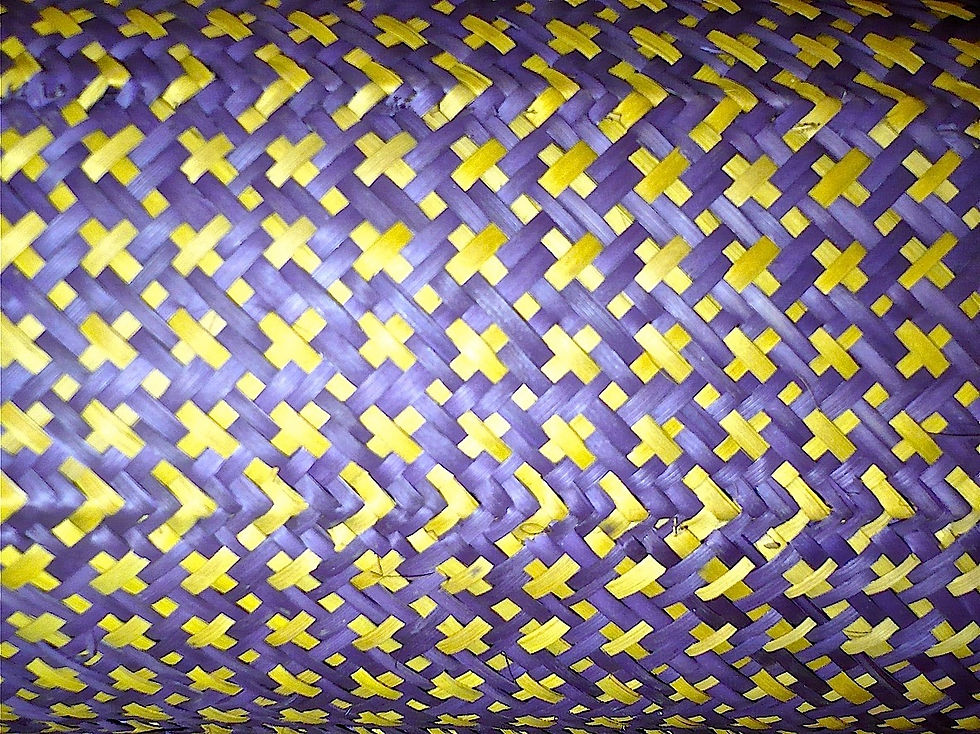Ugandan plaits
Some selected images of Ugandan plaiting and mat making (mekeka). The materials, techniques and processes; and social, cultural and economic meaning were explored, as well as the symbolic meaning of certain patterns used in different areas of south-eastern and south-western Uganda.










Ugandan women have been making sleeping mats from braids of plaited palm leaves for hundreds of years - known locally as mekeka. Parallel practices of plaited mat making are found in many countries in the region - as well as in the Arabian Peninsula - although shapes, palettes and motifs vary. Most of the plaited mats in East Africa show a marked Swahili-Arab influence, often combining plain, coloured strips of braid with patterned strips - as do mats produced by woman of Nubian descent in Uganda, who use different patterns, colour combinations and some different fibres from those traditionally made by the women of purely Bantu descent. As many of the patterns found in Ugandan plaited braids reflect traditional Bantu motifs (that pre-date Swahili-Arab contact), it is possible that Ugandan mat making is part of a more ancient indigenous craft tradition.
Historically Ugandan mekeka patterns have been indicators of different families or ethnicities, designs being passed down through generations. The increase in tribal intermarriage and migration to the cities in Uganda has been such that patterns are generally no longer specific to tribal groups, clans or families. I have met no one who can remember where the patterns came from, just that they have ‘always been there’.
However, most patterns and motifs had symbolic meaning to the groups that originally produced them and may have represented proverbs, allegories, myths or legends. Some evocative examples of pattern names are Hearts, Cows in a Pen, The Nile, Drinking Glasses, Box, Tilapia, Star, Mama is Changing her Mind and Mutesa’s belt. Some patterns reflect the more modern era or the former colonial presence, such as Railway Tracks, Missionaries’ Tents or Kepe (policeman’s stripes).
Many communities in Uganda are proficient in plaited mat making. A braid - normally between three and eight centimetres in width - is plaited from numerous lengths of split palm leaf that range from two to five millimetres in width. The braids are very firm, with each strand backed up by others as new splints of palm leaf are worked in before the previous ones end. An enormous number of patterns are created by using memorised mathematical formulae.
How the braid is organised into a mat varies in different regions and amongst different groups of makers. The archetypical Ugandan mekeka is joined by invisibly and continuously stitching a single length of braid with raffia to form a cylinder - repeat patterns carefully matched to give the impression that the mat is woven in one piece. This is then cut down the length, opened out into a somewhat asymmetric rectangle, then bound with a further length of folded, plaited braid – often in a contrasting colour. Only very close examination reveals that these mats are made of strips of braid rather than formed from an apparently seamless sheet of plaited textile.
Some Ugandan mat makers in the south-west of the country make mats from separate strips of braid in varying colours and patterns which sometimes incorporate text - often commissioned as gifts. These strips of braid are laid out in the order in which they should be joined, each stitched to the next to achieve the desired composition. This ‘rectangle’ is then bound around the outside edge with a folded strip of braid.